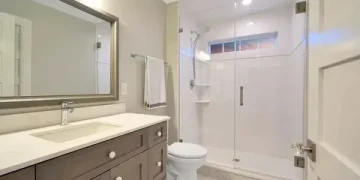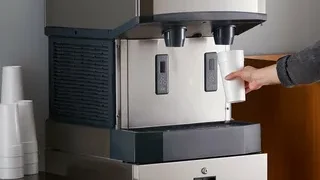The coffee table, often underestimated, is a central piece in any living room. It’s not just a surface for drinks and remote controls; it’s a focal point, a functional hub, and a key element that ties your entire decor together. Choosing the “perfect” coffee table involves more than just picking one that looks nice. It requires a thoughtful consideration of size, shape, material, style, and functionality to ensure it complements your space and meets your lifestyle needs. This guide will walk you through the essential steps to make an informed decision.
1. Assess Your Space and Layout
Before you even start browsing, take stock of your living room’s dimensions and existing furniture arrangement.
- Size Matters: The coffee table should be proportionate to your sofa and the overall room. A good rule of thumb is that its length should be approximately two-thirds the length of your sofa. For depth, ensure there’s enough space to walk around it comfortably (ideally 18-24 inches between the table and seating).
- Height is Key: The top of your coffee table should be roughly the same height as your sofa cushions, or no more than 1-2 inches lower or higher. This ensures easy access to drinks and snacks.
- Traffic Flow: Consider how people move through the room. The coffee table shouldn’t obstruct pathways.
2. Determine the Ideal Shape
Coffee tables come in various shapes, each offering different aesthetic and functional benefits:
- Rectangular: The most common and versatile. Ideal for longer sofas or sectionals, providing ample surface area and balancing the linear nature of most seating.
- Square: Works well with square-shaped sectionals or in smaller, more intimate seating arrangements. Provides a balanced look in square rooms.
- Round/Oval: Excellent for smaller spaces or rooms with lots of sharp angles, as they soften the look and are easier to navigate around, especially with children or pets. They also encourage conversation by allowing everyone to reach the center.
- Irregular/Organic: For a unique, artistic touch. These can become a statement piece but might be less practical for everyday use.
3. Consider Material and Durability
The material of your coffee table significantly impacts its style, durability, and maintenance.
- Wood: Classic, warm, and versatile. Options range from rustic reclaimed wood to sleek polished finishes. Durable but can be susceptible to scratches and water rings.
- Glass: Creates an open, airy feel, making small spaces appear larger. Easy to clean but shows fingerprints and requires frequent wiping. Can be fragile, so consider tempered glass for safety.
- Metal (Iron, Brass, Steel): Adds an industrial, modern, or glamorous touch. Highly durable and easy to maintain.
- Marble/Stone: Luxurious and sophisticated. Extremely durable and heat-resistant but very heavy and can be costly. Requires sealing to prevent stains.
- Upholstered (Ottoman): Offers softness and can double as extra seating or a footrest. Less ideal for drinks unless paired with a tray. Great for families with young children.
4. Match Your Existing Decor Style
Your coffee table should seamlessly integrate with your living room’s overall aesthetic.
- Modern/Minimalist: Clean lines, simple shapes, materials like glass, metal, or light wood.
- Traditional: Rich woods, ornate details, classic shapes.
- Industrial: Raw metal, reclaimed wood, utilitarian designs.
- Bohemian/Eclectic: Unique, handcrafted pieces, mixed materials, global influences.
- Scandinavian: Light woods, functional design, minimalist aesthetic.
5. Prioritize Functionality
Beyond aesthetics, think about how you’ll actually use the coffee table.
- Storage: Do you need space for remotes, magazines, or blankets? Look for tables with drawers, shelves, or lift-tops.
- Versatility: Could it serve as extra seating, a footrest, or even a workspace? An ottoman-style table or one with a lift-top can be highly functional.
- Durability for Use: If you have kids or pets, or frequently entertain, opt for materials that are easy to clean and resistant to wear and tear.
Conclusion
Choosing the perfect coffee table is a balance of form and function. By carefully considering your space, desired shape, suitable materials, existing decor, and practical needs, you can select a piece that not only enhances the beauty of your living room but also serves as a highly functional and integral part of your daily life. Take your time, measure twice, and visualize how the table will fit into your lifestyle before making your final selection.










